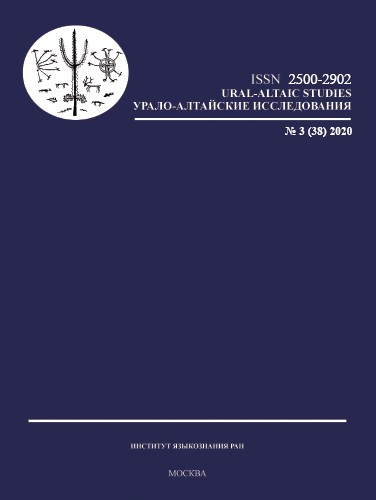Дискуссионная заметка к статье Н. В. Сайнаковой и С. В. Ковылина «Материалы по топонимике Кетского Приобья как основа для выявления границ расселения диалектно-локальной группы šöšqum/šöšqup и подтверждения промежуточного статуса среднеобского...
Discussion note on the article by N. V. Saynakova and S. V. Kovylin “Materials on toponymy of the Ket Ob region as a basis for identification of the settlement border of the šöšqum/šöšqup dialect local group and confirmation of the intermediate...
Author(s): Julia V. NormanskajaSubject(s): Phonetics / Phonology, Historical Linguistics, Comparative Linguistics, Finno-Ugrian studies, 18th Century, 19th Century
Published by: Институт языкознания Российской академии наук
Keywords: Selkup dialects; phonetic; graphic; toponymy;
Summary/Abstract: The discussion note shows that the classification of toponyms proposed by N. V. Saynakova and S. V. Kovylin does not seem entirely reliable from the point of view of southern and central dialectal features. This is due to the fact that, as the analysis of monuments in the 18th and 19th centuries shows, most of the features at that period did not allow to reliably distinguish between southern and central dialects, in particular, 1) southern t́ ~ central č́, 2) southern -j ~ central -l / -l'. The discussion note provides an alternative classification of toponyms based on reliable well-known dialectal features. As a result, we can conclude that the number of examples is not sufficient for convincing toponyms’ assignment to southern or central dialects or for proof of the dialects’ intermediate status. Only for the dialect of Ivankino village the intermediate status looks reliable, but it was known earlier.
Journal: Урало-алтайские исследования
- Issue Year: 2020
- Issue No: 03 (38)
- Page Range: 152-156
- Page Count: 5
- Language: Russian

